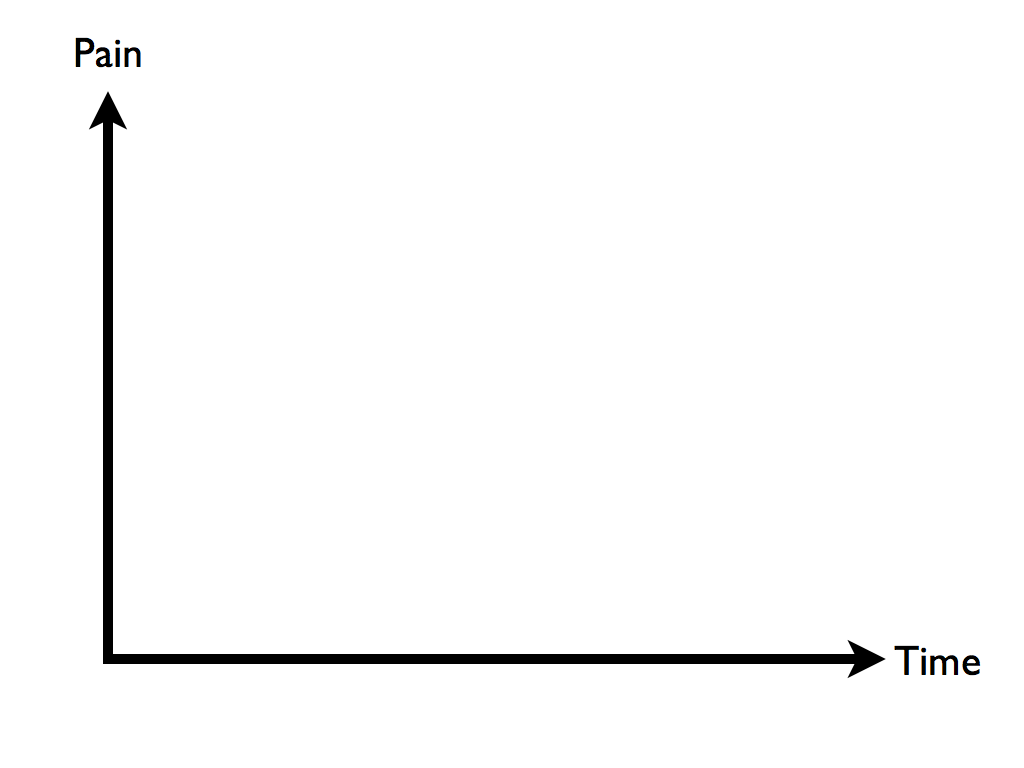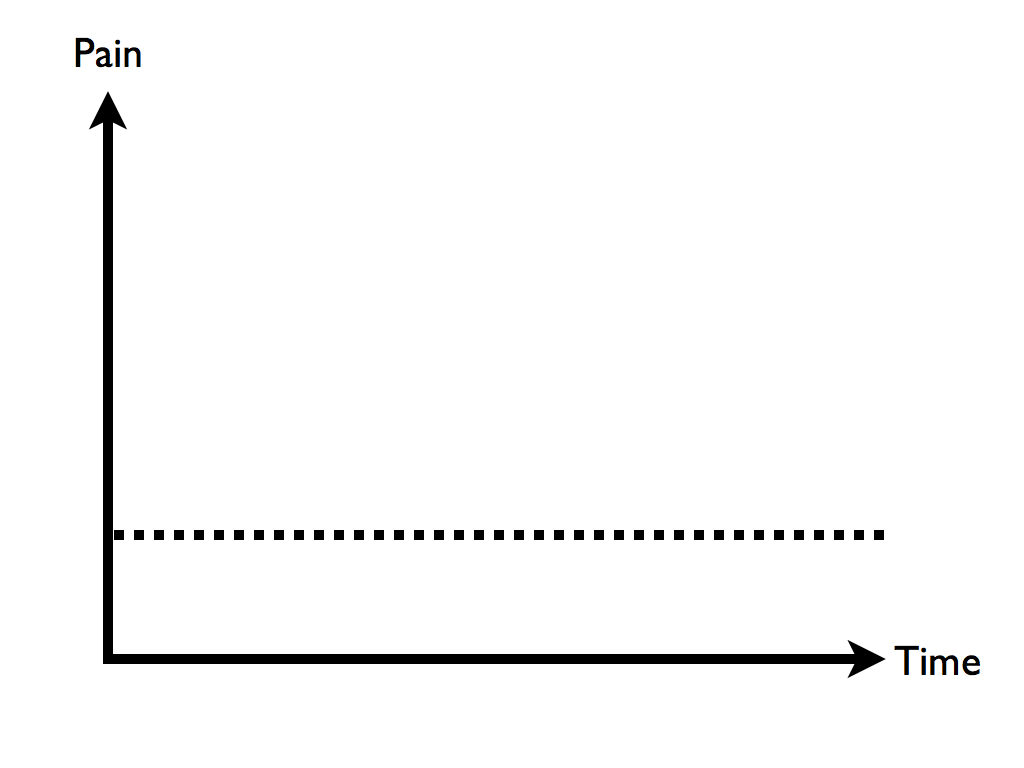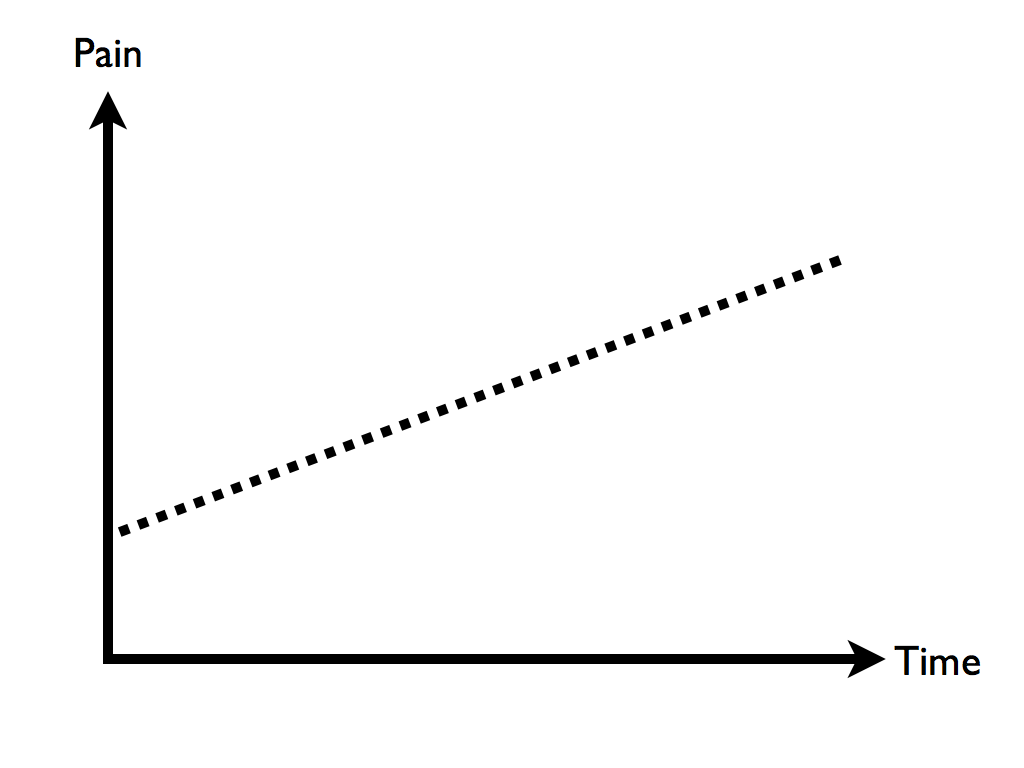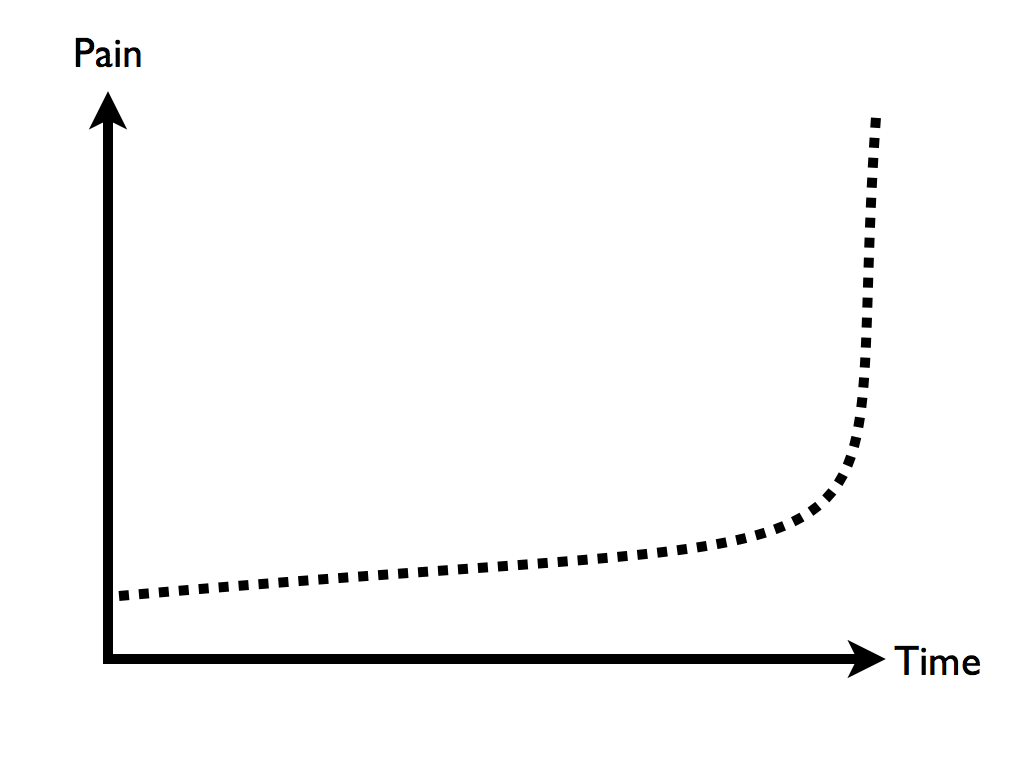Imagine a plane whose dimensions are time and pain.

A problem is a path through this space.
Some problems are stable.

These are for politicians.
Some problems worsen steadily.

These are for engineers.
Some problems immediately threaten life, liberty or happiness.

These are for physicians and soldiers.
Some problems are a recurrent itch.

These are for entrepreneurs.
Some problems loom at the horizon of human foresight.

These are for scientists.
Notes
- There's another (more positive) way to interpret these graphs--the value of a solution over time.
- A scientist doesn't always have to be working on a far-off solution. Rather, scientists ought to stay with a problem until they have a workable model, theory or prototype that they can hand off. Over the course of a decade or two, a scientist might see a solution through from inception to deployment.
- There's become pressure to make science yield more immediate results. Such pressure shifts attention away from long-term problems, and necessarily reduces the scope of science's impact.
- The role of basic science and pure theory is to find solutions to the problems we don't even know are coming. Basic science and pure theory are humanity's insurance policy against the unknown unknown.
Thinking questions
There are more problem-solvers than just politicians, engineers, physicians, soldiers, entrepreneurs and scientists.
What are the shapes of problems for other professions?
Do some professions solve more than one kind of problem?
Does science have a role to play in problems of other shapes?
Related posts
- Recommended reading for grad students.
- The illustrated guide to a Ph.D.
- Ten easy ways to fail a Ph.D.
- How to get into grad school.
- Advice for thesis proposals.
- Productivity tips for academics.
- Academic job hunt advice.
- Successful Ph.D. students: Perseverance, tenacity and cogency.
- The CRAPL: An open source license for academics.